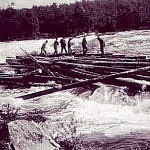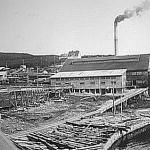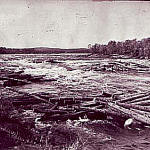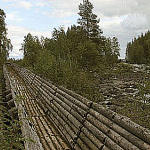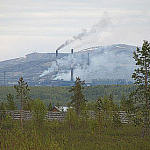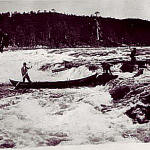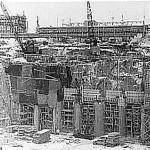

Home
Area
Vätsäri
Övre Pasvik
Pasvik Zapovednik
Nature
Geology
Climate
Water system
Flora
Fauna
Culture
Population
Religion
Sources of livelihood
Old ways of life
Time of industrialism
History
Stone Age
Early Metal Age
Late Metal Age
Middle Ages
Towards modern times
Timeline
Cooperation
Nature monitoring
Nature tourism
Publications
Contacts
Visit Pasvik-Inari
Guidelines
Regulations
News
Links
Time of industrialism
Timber works and wood industry
Forests of the Pasvik-Inari area were harvested already in the 17th century, when the Norwegian Arctic Sea coast needed wood for firewood and for building boats and houses. By the end of the 19th century, the sea coast forests had been cut down in Norway, and Norway began to order wood from Finland. The Skolt Sámi of Neiden Lapp village did not cut wood for sale, but the Finnish settlers did. Wild loggings continued in Vätsäri Wilderness even though Metsähallitus was established in 1859 to administer and manage the state- owned forests. The situation calmed down in 1913 when a new forest ranger with a good salary started to work in the area.
During the 19th century, the saw mill industry spread rapidly from south towards the intact raw material sources of north. In Russia, the saw mills were erected at first along the Arctic Sea coast and, later, inland. In the Government of Archangel, there were 8 mills in 1861, and by 1900 the amount of saw mills was increased to 34. The opening of the A/S Sydvaranger iron mine in Kirkenes intensified saw mill and logging activity in the area in the beginning of 1900s.
In Finland, the massive logging started in the 1920s when Metsähallitus sold 2 million logs to a Norwegian-English company Atif. It delivered the timber to the saw mill of A/S Pasvik in Jakobsnes on Pasvik River. The loggings and timber floating employed many people in the 1920s and 1930s. In the early 1940s, German and Austrian solders cut down forests in order to get firewood around Pechenga. Also building of the nickel smeltery and mine on Kolosjoki River and erecting of the Jäniskoski power station with its rationing dam needed raw material. The German exploitation of firewood brought about large clear cuts in the Norwegian parts of the Pasvik valley. Timber was floated for the last time from Lake Inarijärvi along Pasvik River in the summer of 1945.
Mines, foundries and hydroelectric power stations
The establishment of an iron mine in Kirkenes at the beginning of the 20th century gave an impetus for industrialisation. The Kolosjoki River smeltery in Pechenga was opened at the beginning of the 1940s. As a result of industrialisation, the Pasvik River was harnessed to produce electricity and extensive areas of forests were felled on the shores of the river and in the southern part of the Vätsäri wilderness area from the beginning of the 20th century until the Second World War.
After the Second World War, there was a standstill due to the Cold War. In spite of that Finland, Norway and Russia made an agreement in 1959 about the regulation of Lake Inari and Pasvik River which is valid even today. By the end of the 20th century, 7 hydroelectric power stations were constructed on the river. Power stations had positive effects on the local economy and daily life by employing local inhabitants and ensuring delivery of electricity. On the other hand, damming caused loss of territory along the river banks. Many people had to leave their houses, and archaeologists had to evacuate also one Skolt Sámi cemetery. Later on it has been studied that regulation has had negative effects on such species which need strong flowing water. In Lake Inari, the regulation has also caused erosion of the shores, reduction in the propagation of lake-bottom animals and decline in the natural fish populations.
